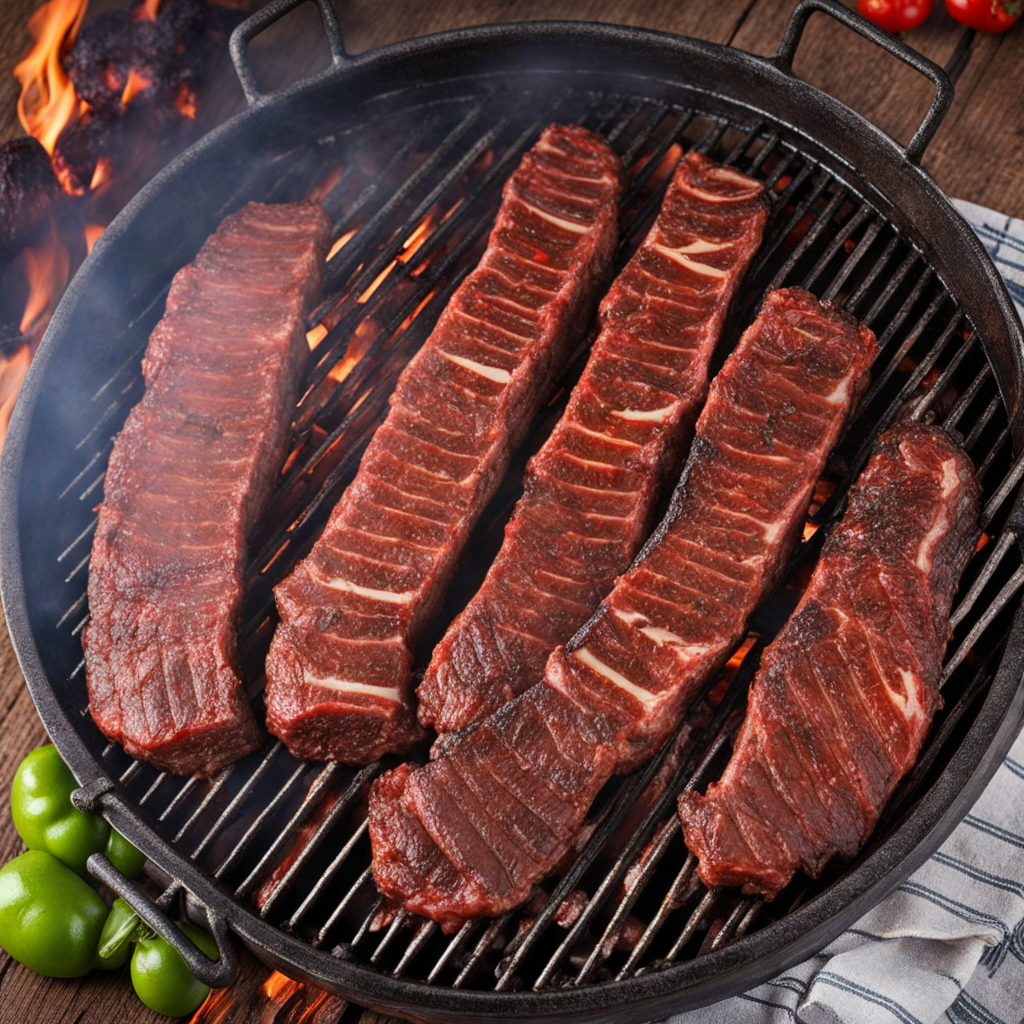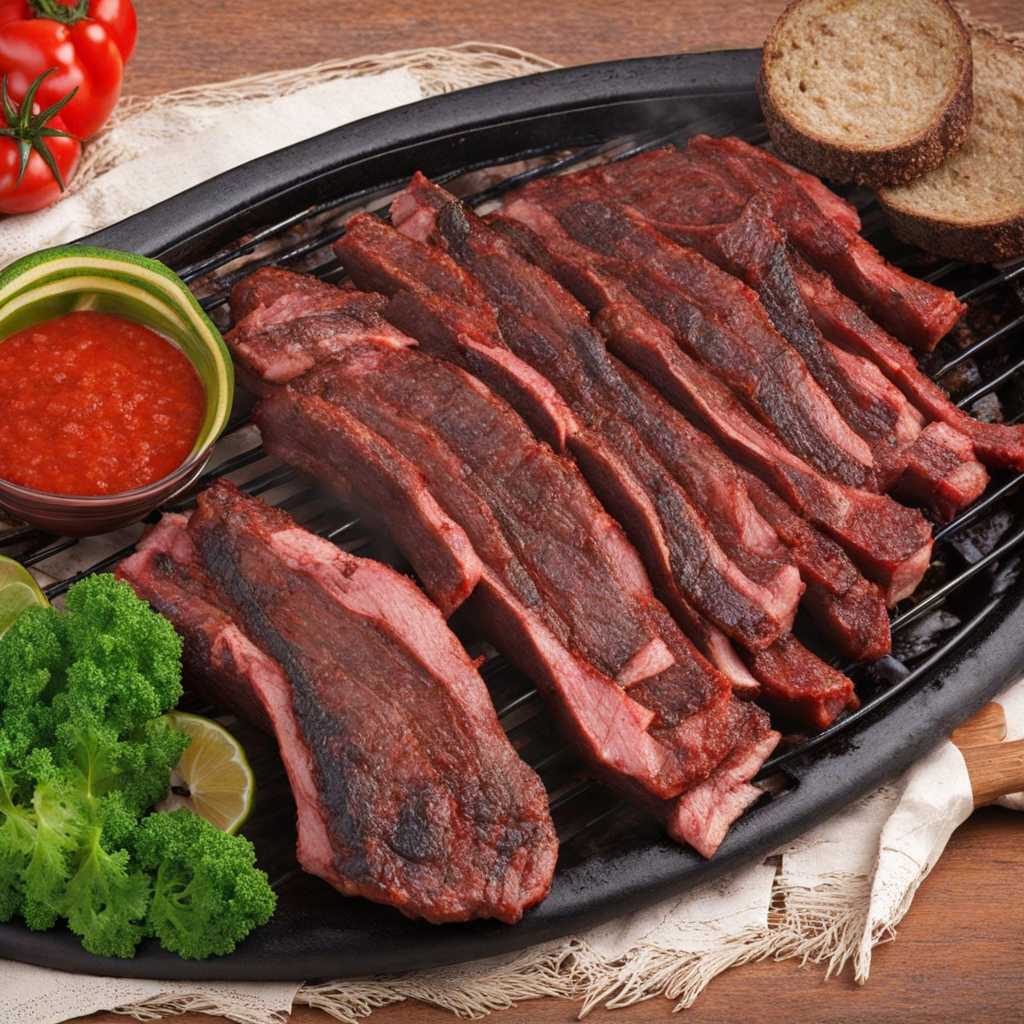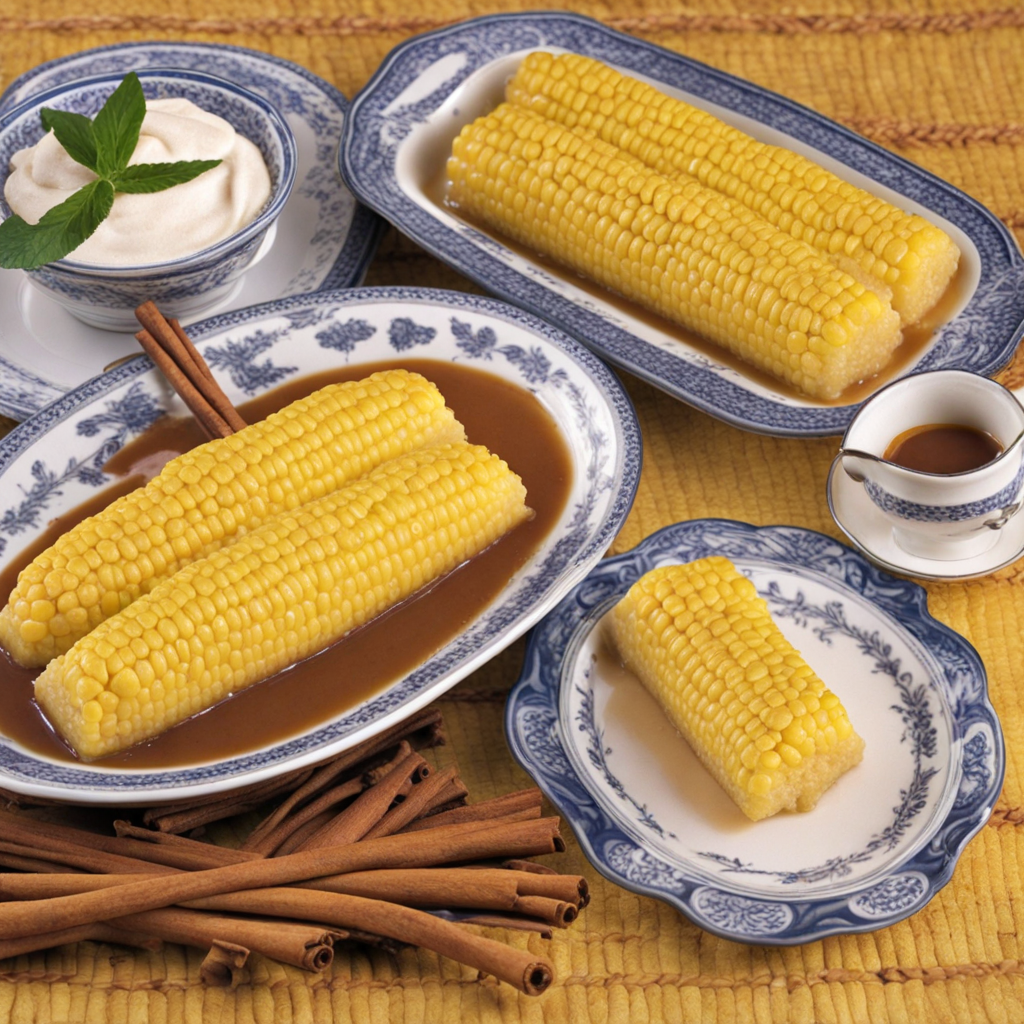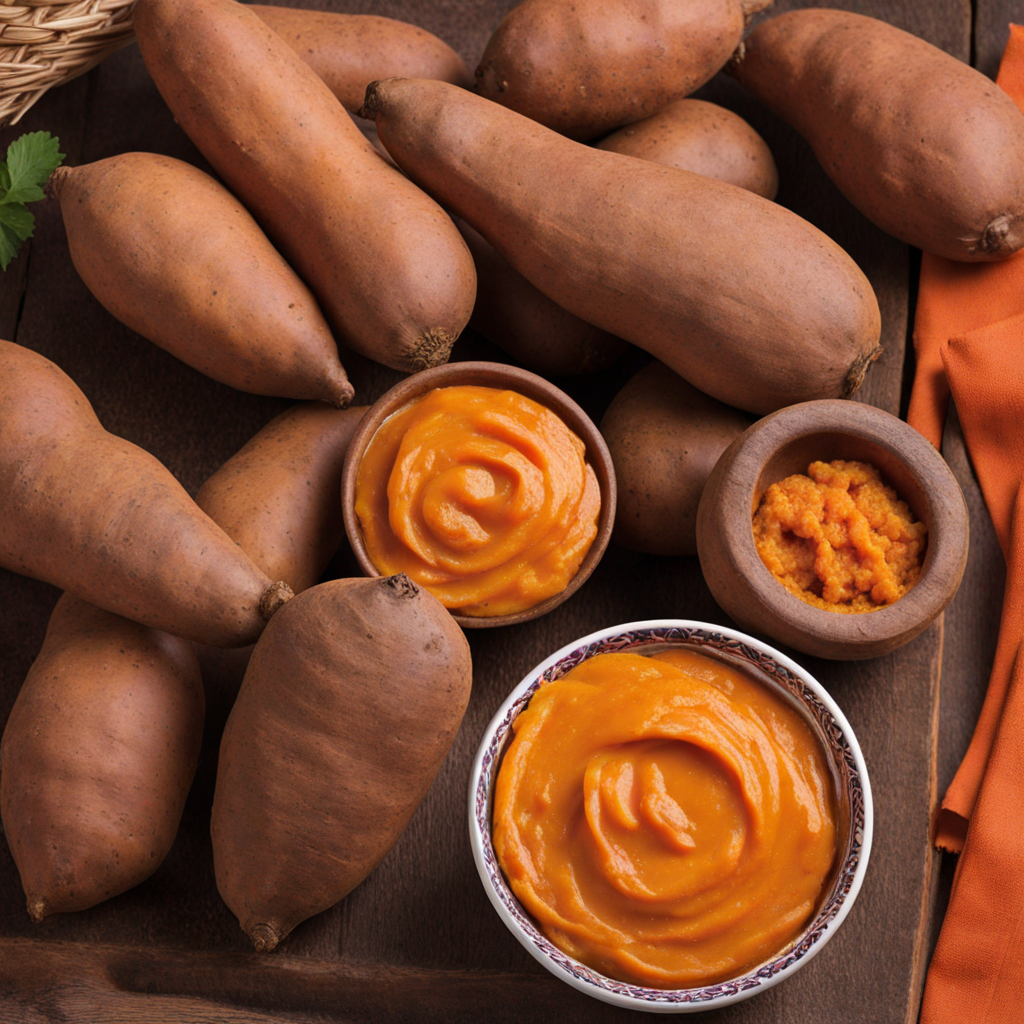Asado
Asado is more than just a meal; it’s a cherished tradition in Paraguay, embodying the spirit of communal dining and the country’s rich culinary heritage. This dish primarily features beef, marinated and slow-cooked over an open flame, which imparts a smoky flavor that is both aromatic and deeply satisfying. The process of grilling the meat, often accompanied by a variety of sausages such as chorizo and morcilla, creates a feast that captures the essence of Paraguayan culture. The cooking method varies, with some opting for a traditional parrilla (grill) while others may use a fire pit, showcasing the versatility and adaptability of this beloved dish.
How It Became This Dish
Asado: A Culinary Tradition of Paraguay Asado, a term that translates to "roast" in Spanish, is much more than just a cooking method in Paraguay; it is a cultural ritual and a symbol of national identity. While the concept of roasting meat over an open flame is prevalent across Latin America, the Paraguayan version of asado carries its unique flavors, techniques, and social significance. This dish has evolved over the centuries, influenced by a blend of indigenous traditions, colonial practices, and contemporary culinary innovations. #### Origins of Asado The roots of asado can be traced back to the indigenous peoples of the region, particularly the Guarani. Long before European colonization, these communities practiced communal cooking techniques that involved roasting meat over open fires, a practice that emphasized social bonding and sharing. The Guarani people raised native animals such as deer and wild pigs, and their methods of preparation laid the groundwork for what would eventually become the Paraguayan asado. The arrival of Spanish colonizers in the 16th century introduced new livestock to the region, particularly cattle, which would come to dominate the Paraguayan landscape. The Spanish brought with them their own culinary practices, including the art of grilling and roasting meats. This melding of indigenous and European influences marked the beginning of asado as we know it today—a celebration of local ingredients and communal gathering. #### Cultural Significance Asado is more than just a meal; it is a vital social event that signifies friendship, family, and community. In Paraguay, asado is often the centerpiece of gatherings, be it a family reunion, a local festival, or a casual get-together among friends. The preparation of asado is a communal affair, where family and friends come together to share the responsibility of cooking, enjoying each other’s company while tending to the flames. In Paraguay, the asado is typically accompanied by tereré, a traditional beverage made from yerba mate, served cold with ice water and often flavored with herbs or citrus. This pairing enhances the communal atmosphere, as people pass around the tereré gourd while enjoying the smoky aroma of the grilling meat. The act of sharing food and drink serves as a bonding experience, reinforcing social ties and creating lasting memories. Asado has also become a point of national pride for Paraguayans. It represents the country’s agricultural heritage and showcases the quality of its beef, which is renowned for its flavor and tenderness. The dish is a symbol of hospitality, as offering asado to guests is seen as a mark of respect and goodwill. In this way, asado transcends mere sustenance; it embodies the spirit of Paraguayan culture. #### Techniques and Ingredients The traditional Paraguayan asado typically features various cuts of beef, such as ribs, sirloin, and flank steak, but it can also include pork, chicken, and even lamb. A defining characteristic of Paraguayan asado is the use of a grill known as a "parrilla." This grill is often constructed from metal bars or a simple grate over an open flame, allowing the meat to cook slowly while absorbing the smoky flavors of the wood or charcoal. One of the unique aspects of Paraguayan asado is the seasoning. Unlike the heavily marinated or spiced preparations found in other countries, Paraguayan asado is often seasoned simply with salt, allowing the natural flavors of the meat to shine through. In some regions, a chimichurri sauce—a blend of parsley, garlic, vinegar, and oil—may be served alongside the meat, adding a fresh, zesty contrast. The cooking process itself is a labor of love. The meat is carefully placed on the grill, and the cook must monitor the heat and flames to achieve the perfect sear and tenderness. This often means spending hours near the grill, fostering a sense of camaraderie among those involved in the cooking process. #### Development Over Time Asado in Paraguay has undergone significant changes over the years, reflecting broader social and economic shifts. In the early 20th century, as Paraguay began to modernize, the asado became a more formalized event, often associated with celebrations and public holidays. The post-war era saw an increase in urbanization, leading to more people moving away from rural traditions. However, asado retained its cultural significance, adapting to new contexts while still honoring its roots. In recent decades, the popularity of asado has surged both locally and internationally. As the global interest in barbecue culture has grown, Paraguayan asado has gained recognition beyond its borders. Food festivals, culinary events, and social media have played pivotal roles in promoting this traditional dish, showcasing its unique flavors and the rich cultural stories behind it. Paraguayans living abroad have also become ambassadors of their culinary heritage, bringing the tradition of asado to new audiences. In addition to its traditional form, innovative interpretations of asado have emerged. Chefs and home cooks alike are experimenting with flavors, techniques, and presentation, incorporating elements from international cuisines while staying true to the essence of Paraguayan cooking. This evolution reflects the dynamic nature of food culture, where traditions are preserved while also allowing for adaptation and creativity. #### Conclusion Asado is a quintessential part of Paraguayan culture, encapsulating the country's history, identity, and values. From its indigenous origins to its role in modern social gatherings, asado has remained a steadfast symbol of unity and pride. As it continues to evolve, the heart of asado—the communal spirit and celebration of shared food—remains unchanged. For Paraguayans, asado is not just about the meat; it’s about the connections it fosters, the stories it tells, and the memories it creates, making it a truly cherished culinary tradition.
You may like
Discover local flavors from Paraguay







